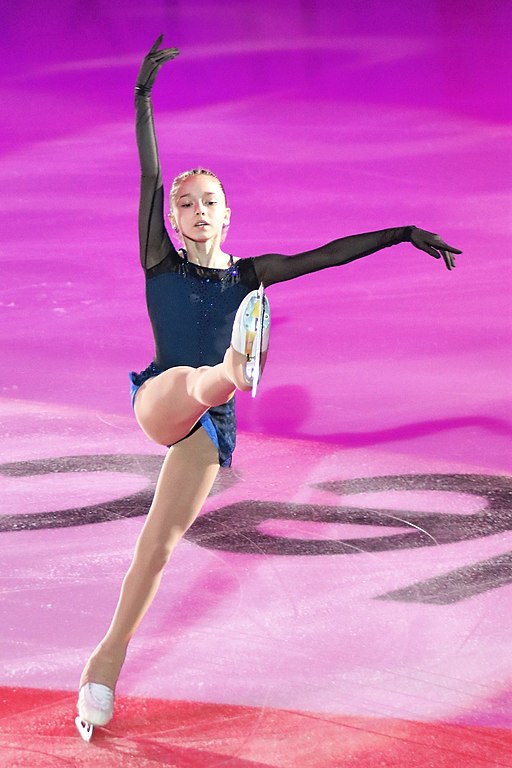Time to revisit the doping case of Karmila Valieva, the 15-year-old Russian figure skater who was allowed to compete in the February 2022 Winter Olympics despite testing positive for the banned substance trimetazidine on the grounds that banning her from competition would cause her “irreparable harm”. The harm was never defined, but presumably went something like careers are short, Valieva was a multiple champion and the top prospect for gold, and she could be later disqualified but couldn’t retroactively compete. An adult would have been disqualified there and then, but 15-year-old was made a “protected person” in the World Anti-Doping Agency’s 2021 code.
Two years on, the Court for Arbitration of Sport has confirmed she is banned for four years, backdated to December 2021, and will be stripped of the results, prizes, medals, and awards she has won in the interim. CAS, the ultimate authority in such cases, did not buy her defense that her grandfather, who is prescribed trimetazidine, inadvertently contaminated her food. She will be eligible to compete again in December 2026.
In a paper, Marcus Camposa,b, Jim Parrya, and Irena Martínková conclude that the WADA’s concept of “protected person” “transforms…potential victims into suspects”. As they write, the “protection” is more imagined than real, since minors are subjected to the same tests and the same sanctions as adults. While the code talks of punishing those involved in doping minors, to date the only person suffering consequences for Valieva’s positive test is Valieva, still a minor but no longer a “protected person”.
A reminder: besides her positive test for trimetazidine, widely used in Russia to prevent angina attacks, Valieva had therapeutic use exemptions for two other heart medications. How “protected” is that? Shouldn’t the people authorizing TUEs raise the alarm when a minor is being prescribed multiple drugs for a condition vastly more typical of middle-aged men?
According to the Anti-doping Database, doping is not particularly common in figure skating – but Russia has the most cases. WADA added trimetazidine to the banned list in 2014 as a metabolic modulator; if it helps athletes it’s by improving cardiovascular efficiency and therefore endurance. CNN compares it to meldonium, the drug that got tennis player Maria Sharapova banned in 2016.
In a statement, the World Anti-Doping Agency said it welcomed the ruling but that “The doping of children is unforgivable. Doctors, coaches or other support personnel who are found to have provided performance-enhancing substances to minors should face the full force of the World Anti-Doping Code. Indeed, WADA encourages governments to consider passing legislation – as some have done already – making the doping of minors a criminal offence.” That seems essential for real protection; otherwise the lowered sanctions imposed upon minors could be an incentive to take more risks doping them.
The difficulty is that underage athletes are simultaneously children and professional athletes competing as peers with adults. For the rules of the sport itself, of course the rules must be the same; 16-year-old Mirren Andreeva doesn’t get an extra serve or a larger tennis court to hit into. Hence 2014 bronze medalist Ashley Wagner’s response to an exTwitter poster calling the ruling irrational and cruel: “every athlete plays by the same rules”. But anti-doping protocols are different, involving issues of consent, medical privacy, and public shaming. For the rest of the field, it’s not fair to exempt minors from the doping rules that apply to everyone else; for the minor, who lacks agency and autonomy, it’s not fair if you don’t. This is only part of the complexity of designing an anti-doping system and applying it equally to minors, 40-something hundred-millionaire tennis players, and minimally funded athletes in minority sports who go back to their day jobs when the comptition ends.
Along with its statement, WADA launched the Operation Refuge report (PDF) on doping and minors. The most commonly identified doping substance for both girls and boys is the diuretic furosemide followed by methylphenidate (better known as the ADHD medication Ritalin). The most positive tests come from Russia, India, and China. The youngest child sanctioned for a doping violation was 12. The report goes on to highlight the trauma and isolation experienced by child athletes who test positive – one day a sporting hero, the next a criminal.
The alphabet soup of organizations in charge of Valieva’s case – the Russian Anti-Doping Agency, the International Skating Union, WADA, CAS – could hardly have made a bigger mess. The delays: it took six weeks to notify Valieva of her positive test, and two years to decide her case. Then, despite the expectation that disqualifying Valieva disqualifies her entire team, the ISU recalculated the standings, giving Russia the bronze medal, the US the gold, and Japan silver. The Canadian team, which placed fourth, is considering an appeal; Russia is preparing one. Ironically, according to this analysis by Martina Frammartino, the Russian bench is so strong that it could easily have won gold if Valeeva’s positive test had come through in time to replace her.
I’ve never believed that the anti-doping system was fit for purpose; considered as a security system, too many incentives are misaligned, as became clear in 2016, when the extent of Russian state-sponsored doping became public. This case shows the system at its worst.
Illustrations: Kamila Valieva in 2018 (via Luu at Wikimedia).
Wendy M. Grossman is the 2013 winner of the Enigma Award. Her Web site has an extensive archive of her books, articles, and music, and an archive of earlier columns in this series. She is a contributing editor for the Plutopia News Network podcast. Follow on Mastodon
